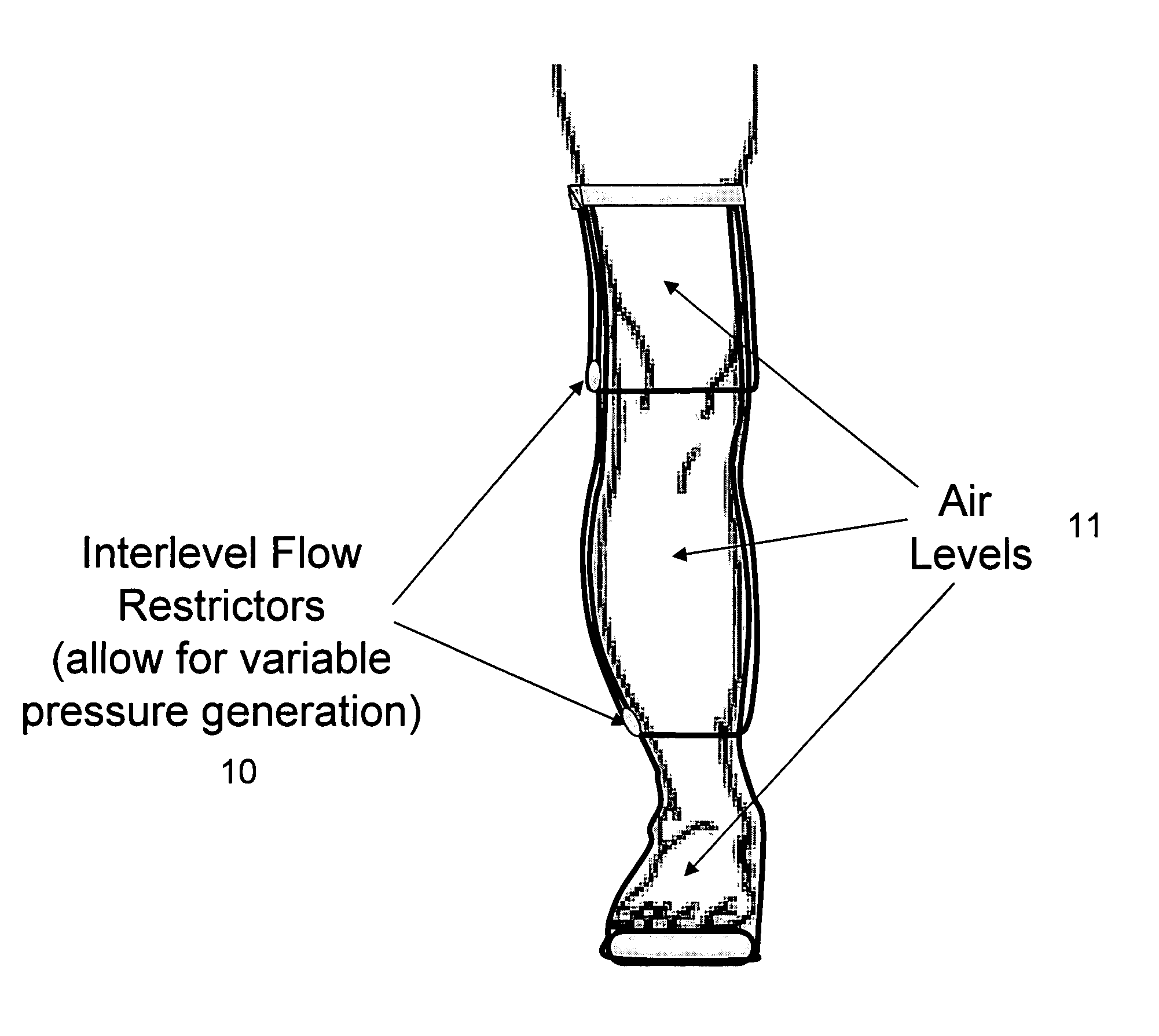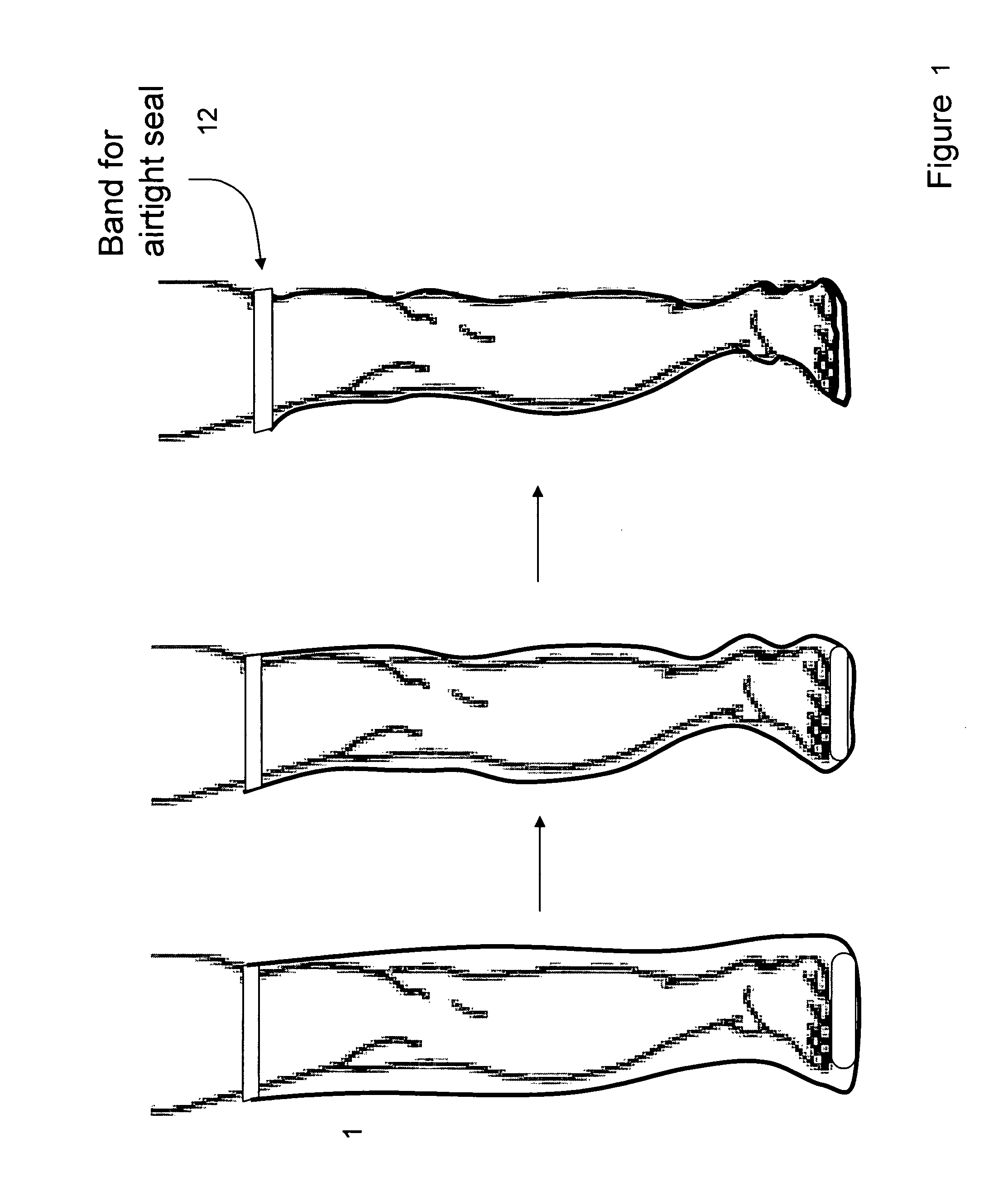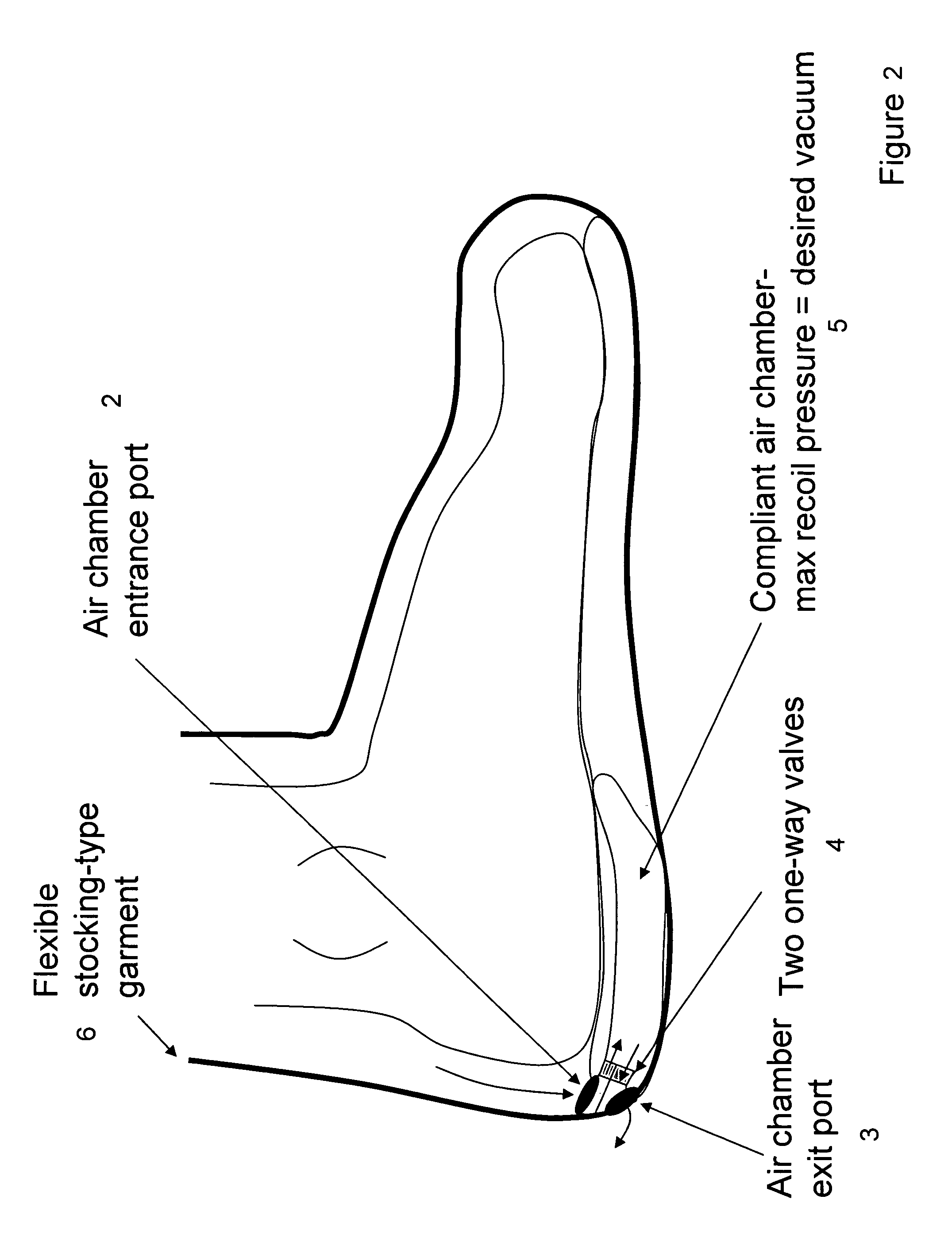Method and apparatus for treating wound using negative pressure therapy
a negative pressure and wound technology, applied in the field of medical devices, can solve the problems of not considering the generation of negative pressure vacuum compression, and achieve the effects of reducing healthcare costs, improving skin protection and skin care, and improving patient convenience and ease of us
- Summary
- Abstract
- Description
- Claims
- Application Information
AI Technical Summary
Benefits of technology
Problems solved by technology
Method used
Image
Examples
Embodiment Construction
Device
Dynamic Vacuum Compression Appliance
[0067]Indications for Use:[0068]1) Limb edema, with associated causes including chronic venous insufficiency, congestive heart failure, lymphedema, and other related conditions[0069]2) Prevention of fluid accumulation, and[0070]3) Treatment of skin ulceration
[0071]Methods for Use:[0072]1) A patient with edema of the lower extremity, for example, will place the flexible stocking-type garment on the affected limb(s),[0073]2) A tight seal will be formed at the proximal end of the stocking-type garment. This seal can be achieved in any number of different manners, including the placement of a band around the top of the stocking,[0074]3) The stocking-type garment will be coupled to an insole-like device designed to be placed inside of standard footwear. This component will incorporate a resilient air chamber and two valves or flow restrictors (such as smaller diameter tubing) to channel air out of the garment upon compression of the air chamber b...
PUM
 Login to View More
Login to View More Abstract
Description
Claims
Application Information
 Login to View More
Login to View More - R&D
- Intellectual Property
- Life Sciences
- Materials
- Tech Scout
- Unparalleled Data Quality
- Higher Quality Content
- 60% Fewer Hallucinations
Browse by: Latest US Patents, China's latest patents, Technical Efficacy Thesaurus, Application Domain, Technology Topic, Popular Technical Reports.
© 2025 PatSnap. All rights reserved.Legal|Privacy policy|Modern Slavery Act Transparency Statement|Sitemap|About US| Contact US: help@patsnap.com



